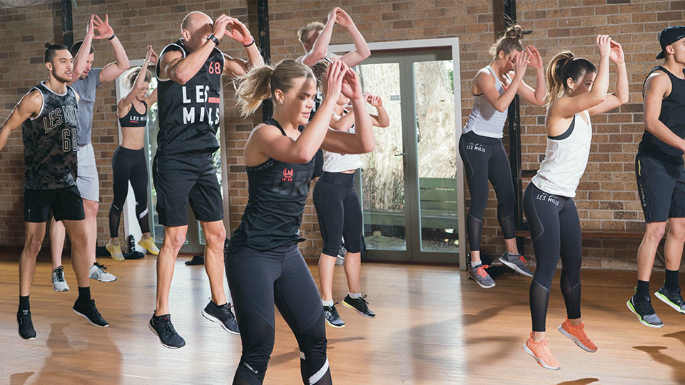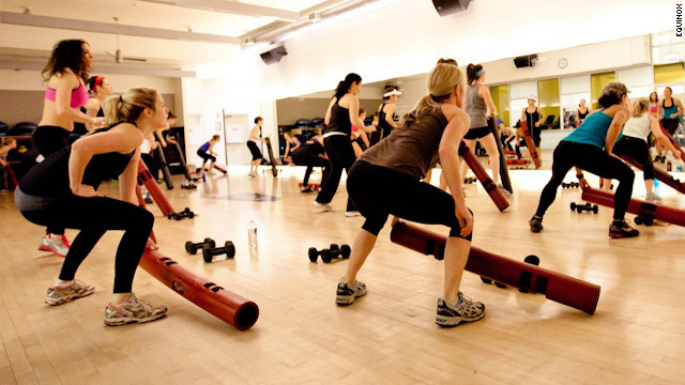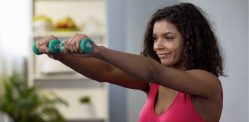A typical HIIT session lasts just 30 minutes and is a much more efficient method of fat burning.
Cardio is the bane of many gym goers’ existences.
Just looking at a treadmill can fill even the most dedicated fitness fanatic with a foreboding sense of danger (or boredom) but it is a necessary evil that comes with a tremendous amount of benefits which include:
- Strengthening of the heart
- Increased metabolism
- Improved brain function
- Improved sleep quality
- Muscular recovery
- Osteoporosis prevention
- Alleviates depression
- And for Diabetics, it can help manage their condition
Not only will partaking in cardio aid in the pursuit of a greater physical appearance but will also elongate your lifespan which isn’t a shabby by-product in the slightest.
In the past, the word cardio has been associated with hours on a treadmill, endless urban jogging and spending an age on a cross trainer. This is known as LISS (low intensity steady state) training which is exerting a low level of exertion for a long period of time.
However, this is association is being tarnished as more and more people are taking up HIIT training as their chosen form of cardiovascular exercise.
What is HIIT?

HIIT Training (High Intensity Interval Training) is a form of cardio that involves repeated intense bursts of exercise in which you are putting in maximum effort followed by an allotted period of recovery time. For example, 20 seconds performing an exercise followed by 10 seconds of recovery which is also known as the Tabata method.
One of the reasons it has become the primary cardio option for gym goers is because a typical HIIT session lasts just 30 minutes. It takes far less time to complete than LISS training and studies have shown it to be a much more efficient method of fat burning.
In 1984, researchers at Laval University (Quebec, Canada) conducted a month long experiment with two groups. One group followed a 15-week program using HIIT while the other performed only steady-state cardio for 20 weeks. Those in the steady-state group burned 15,000 calories more than their HIIT counterparts. However, those in the HIIT lost significantly more body fat.
A 2001 study from East Tennessee State University found similar results with subjects who followed an eight-week HIIT program. Subjects in the HIIT group dropped 2% body fat over the course of the experiment whilst those on the steady-state program lost no body fat.
An added effect of HIIT training is what is known as EPOC (excess post oxygen consumption) which increases your resting metabolic rate for the following 24 hours meaning you will burn more fat in this time.
A 2008 study from the University of New South Wales, Sydney, Australia, reported that women following a 20-minute HIIT program consisting of 8-second sprints followed by 12 seconds of rest, lost six times more body fat than a group who followed a 40-minute low intensity cardio program performed at a constant intensity of 60 percent of their maximum heart rate.
The high intensity style of training will also help build up endurance as both your aerobic capacity (amount of oxygen your body can use at a cellular level) and lactate threshold (ability to handle lactic acid build up in the muscles) will be increased.
HIIT will never get boring

The beauty of HIIT is that the workouts can be extremely varied and can even be done without any equipment; in fact, the majority of HIIT workout rely on bodyweight exercises which, in itself, has endless variations.
Press ups, squats, burpees, sit ups, crunches, high knees, lunges, jumping jacks, tricep dips, plank, kicks and jabs are just some of the bodyweight exercises you could incorporate into a routine.
If you do train a gym many different pieces of equipment can be at your disposal including: all of the usual cardio machines, by performing sprints on a track, with gloves and a punch bag, using powerbags, kettle bells, etc.
You can incorporate dumbbell and barbell movements into these routines but, for those who already weight train a few times a week, it would be advisable to avoid movements you already perform for the sake of recovery and to keep things varied.
Are there any drawbacks?

Although it sounds like HIIT training is the greatest thing in the known fitness universe, doing it too often can impede recovery especially when combining these sessions with an existing weight training routine. Everyone is different so experiment and find your body’s happy balance.
HIIT also involves many multi-jointed complex movements and as the workout persists and fatigue sets in form may suffer which has the potential to cause injury.
However, if you are maintaining good form injury will not be an issue. Know your limits, adjust your rest periods accordingly and over time your endurance will increase and you will be able to perform these movements with good form for more reps in those maximum effort periods.
HIIT may not be suitable for everyone as the workout are extremely intense meaning only those with a basic level of fitness should partake.
It can also involve many high impact exercises so those with weak joints may experience discomfort but, again, tailor these workouts for your individual needs. If a movement is painful remove it from the routine and replace is with a different exercise.
Is there still a place for LISS?

There is certainly still a place for LISS in a training routine. For example, if 3 days of weight training and 3 days of HIIT training per week is proving to be too much of a strain on your body, replace one of the HIIT days with a LISS day and see if that helps.
Also, if current fitness levels, injuries or specific medical conditions are preventing you form performing HIIT, then LISS should be your chosen method of cardio. LISS will still improve fitness levels and overall health but not to the same extent as HIIT would.
Overall, the evidence is clear as day. Studies show that HIIT is the superior form of cardio training and will simply yield greater results.






























































